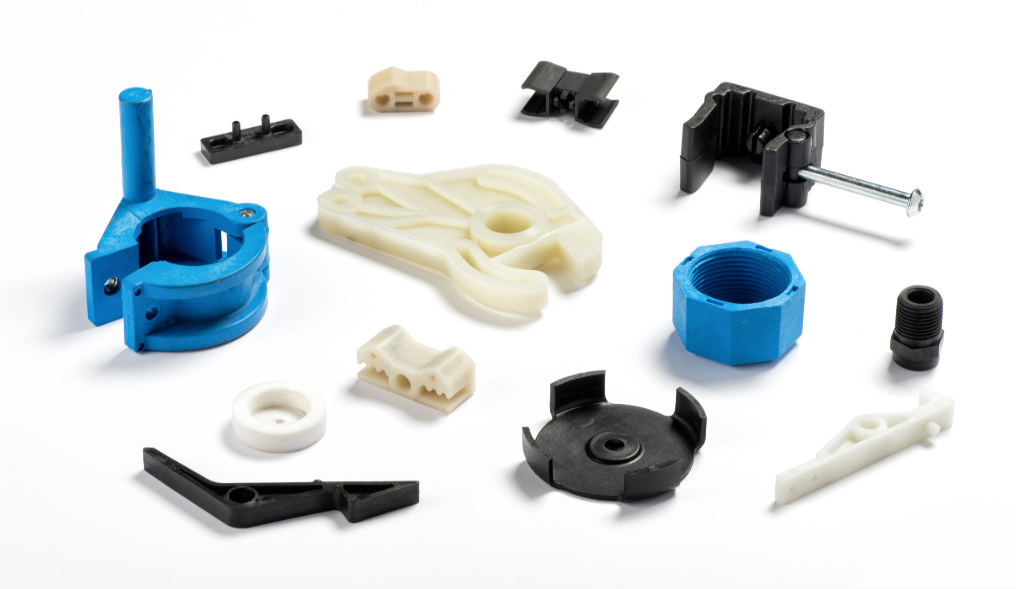
Injection molding is one of the most ubiquitous and accessible processes that you can use to manufacture your products. The versatility of injection molding that makes it such a good choice for so many products does not, however, mean that certain design aspects and considerations can get overlooked. In fact, understanding the injection molding process and the qualities of product design that are most suited to it can go a long way toward improving the efficiency of your production runs and the quality of your end products.
Taking just a few minutes to learn (or remind yourself of) some principles of design to incorporate in your injection molding designs is more than worth the effort it can save you in the future. Read below to learn more about injection molding design tips.
1. Uniformity is best.
A)Varying wall thickness creates uneven fill throughout the cavity
B)Thinner sections will cool faster than thicker areas causing highly stressed areas where distortion and warping will occur
C)It is recommended to core out the thick areas to create uniform walls, which will reduce cycle time and plastic usage and improve part cosmetics
D)Depending on the type of material being used, nominal wall thickness should not vary more than 15% smooth trumps sharp. Use radii when possible and avoid sharp transitions between wall sections.
2.Draft is your “frenemy.”
Adding a draft angle to the faces of your part is helpful to release it from the tool, yet it can cause design challenges especially for mating parts. Recommend minimum draft angles are one degree on untextured core and at least three degrees on textured cavity surfaces.
3.Avoid surfaces with zero draft unless necessary.
If you do need a zero-draft area to ensure proper part mating and tolerances, try to minimize it to just a portion of the face, not the whole surface.
4.Simpler is better.
Avoid undercuts (areas that cannot be formed via the simple open/shut direction of a tool). When simple won’t work, lifter and slides allow features to be formed that are undercuts in the main pull direction. If so, leave at least 2 to 3 times the width of the feature to allow the lifter or slide to travel.
5.Transition from thick to thin.
Parts will form better if plastic flows through features moving from greater to lesser wall thickness starting from the gate(s) (where the plastic first flows in to fill the part).
6.Sink (a local surface depression on a part due to thicker sections of plastic cooling more slowly) is bad.
To reduce or eliminate the visibility of blemishes on cosmetic surfaces it is important to follow some recommended guidelines:
A) Try to avoid gates, ribs, screw bosses, etc. on the back side of important cosmetic surfaces;
B) Rib heights should be 3x or less than the wall thickness;
C) Rib bases should be 60% or less of the wall thickness.
7.Datums define territory.
Use datums (features that are used as reference points to define each part) to establish part interfaces and interactions to the overall system. Using a datum structure that matches the design intent of the assembly can mean the difference between a product functioning well or not.
8.Pay attention to DFM analysis.
Take DFM (Design for Manufacturing) reports seriously since they convey the tool molder’s understanding of the design especially information like ejector pin locations (may conflict with planned design changes), gate locations (may cause cosmetic concerns) and parting line location (could affect interactions with mating parts). Use inspection reports to interrogate the design.
9. Incorporate texture into your design:
There are many different ways to create texture in injection molded projects.Some manufacturers choose to add texture after the injection molding process has been completed, but it’s possible to create a textured product with a specialized mold. Etched or milled molds are effective at creating a textured product. By incorporating texture into your mold design, you can save time and money that would otherwise be spent on secondary texture processes.